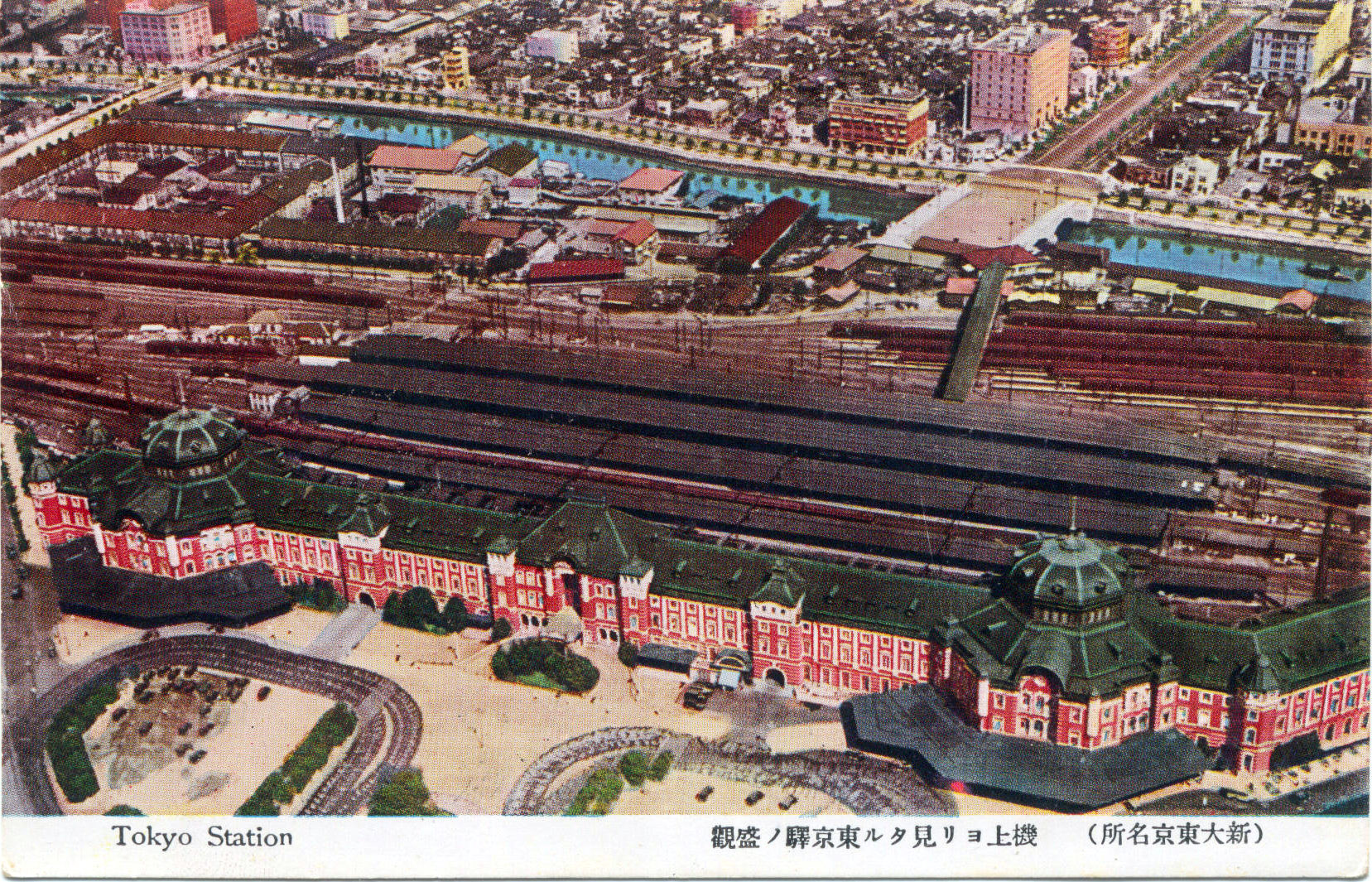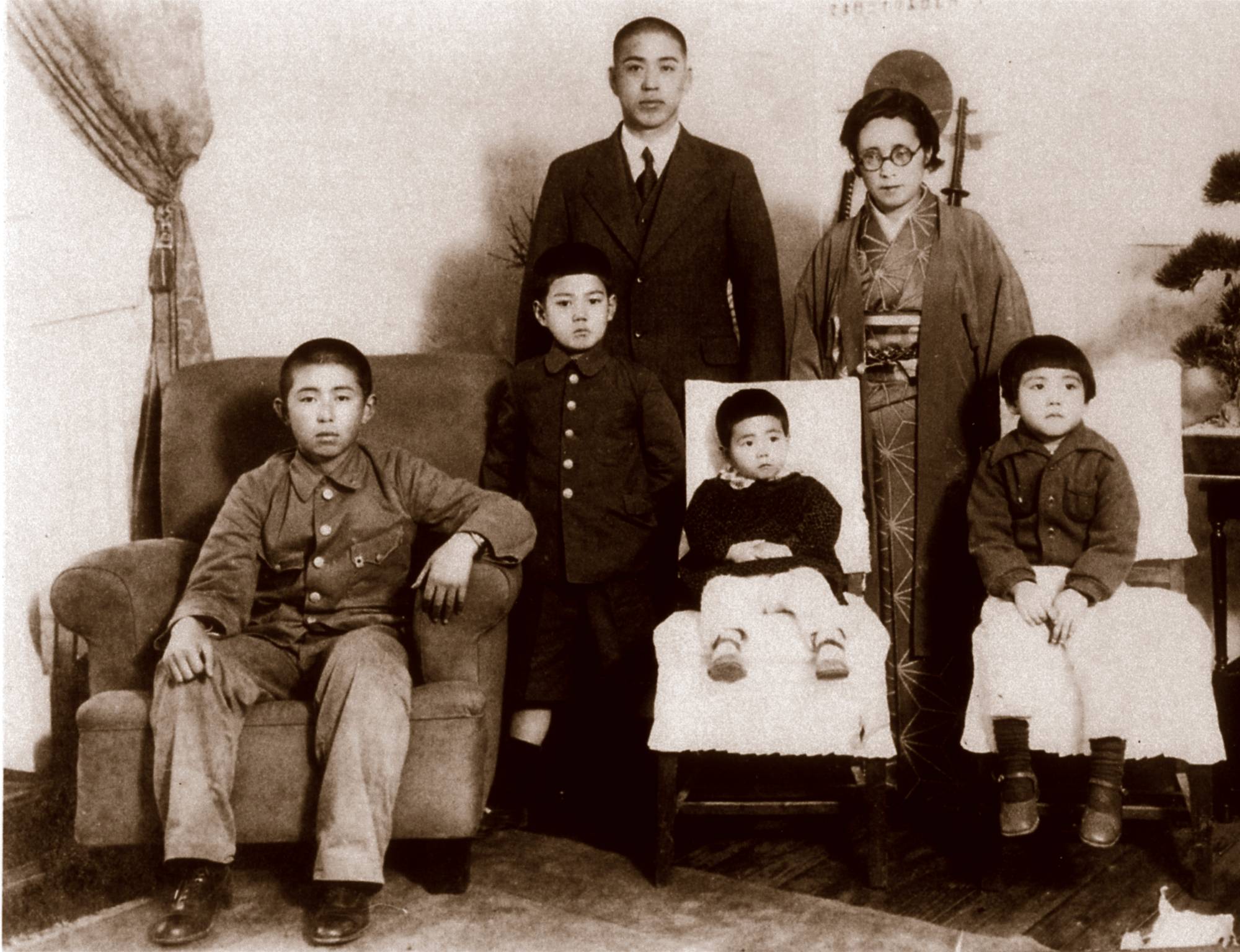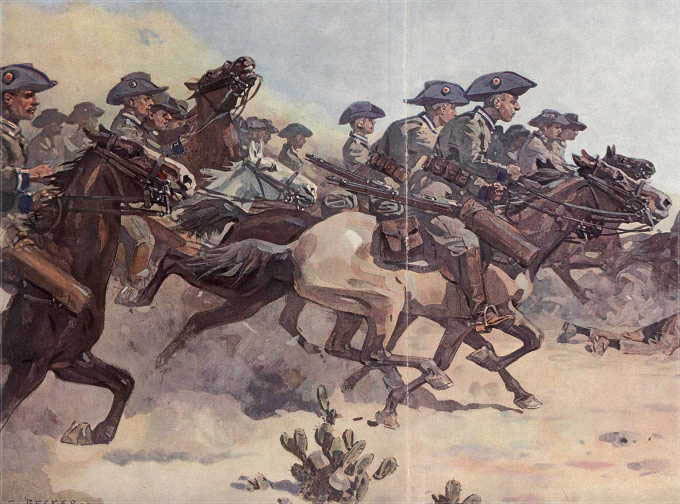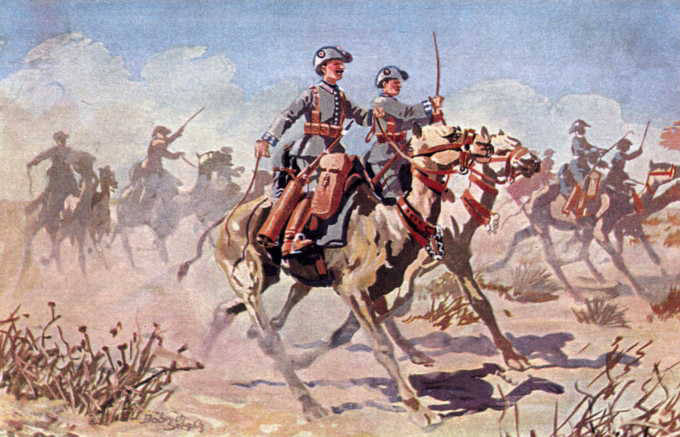Chapter 425: Alfred Ploetz and the Idea and Ideal of the German Nordic Aryan race and the Jewish race
Chapter 425: Alfred Ploetz and the Idea and Ideal of the German Nordic Aryan race and the Jewish race:

Alfred Ploetz (born August 22, 1860) was a German physician, biologist, eugenicist known for coining the term racial hygiene (Rassenhygiene, a form of eugenics) and promoting the concept in Germany. Alfred Ploetz was born in Swinemünde, Germany and he grew up and attended school in Breslau. At this time he began his friendship with Carl Hauptmann, brother of the famous author Gerhart Hauptmann. In 1879 he founded a secret racist youth society. In Gerhart Hauptmann's Drama Vor Sonnenaufgang (Before Sunrise) which was first performed on October 20, 1889 in Berlin, the key figure of the journalist Loth is based on Ploetz. After school Ploetz at first studied political economy in Breslau. There he joined the Freie wissenschaftliche Vereinigung (free scientific union). Among his friends were, besides his brother , his former school friend Ferdinand Simon, the brothers Carl and Gerhart Hauptmann, Heinrich Laux, and Charles Proteus Steinmetz. This circle enthusiastically read the works of Ernst Haeckel and Charles Darwin. Carl Hauptmann was a student of Ernst Haeckel, and Gerhart Hauptmann and Ploetz attended some of his lectures. The group expanded and developed a plan of founding a colony in one of the pacific states and established itself as the "Pacific association". They planned a "community on friendly, socialist and also pan-Germanic basis". In consequence of the prosecution of socialistically minded persons in application of Otto von Bismarck's anti-socialist laws (1878–1890), in 1883 Ploetz fled to Zurich, where he continued to study political economy with Julius Platter (1844–1923). In his memoirs Ploetz states as an important reason for his choice of Zurich that in his studies in Breslau socialist theories were only incidentally mentioned.
After living for a half a year in the United States, Ploetz returned to Zurich and began to study medicine. In 1886, he fell in love with a fellow student Agnes Bluhm despite being involved with Pauline Rüdin. They decided to get married early in 1887. Ploetz was also seeing an American named Mary Sherwood who was studying hypnotism. In 1890 Ploetz became medical doctor and married his former girlfriend Pauline, though the two never had children. Bluhm however kept Ploetz as a close friend throughout her life and they both shared similar views on racial purity and the benefits of eugenics. Ploetz and his wife lived in the US for four years, and divorced in 1898. Ploetz later married Anita Nordenholz. This marriage produced three children: Ulrich (called Uli), Cordelia (called Deda) and Wilfrid (called Fridl, 1912–2013). Ploetz first proposed the theory of racial hygiene (race-based eugenics) in his Racial Hygiene Basics (Grundlinien einer Rassenhygiene) in 1895. In 1904 Ploetz founded the periodical "Archiv für Rassen-und Gesellschaftsbiologie" with Fritz Lenz as chief editor, and in 1905 the German Society for Racial Hygiene (Die Berliner Gesellschaft für Rassenhygiene) with 31 members. In 1907 the society became the "International Society for Racial Hygiene". In 1930 he became an honorary doctor of the University of Munich.
Ploetz was a supporter of the Nazi Party, which took power in 1933. Ploetz wrote in April 1933 that he believed Hitler would bring racial hygiene from its previous marginality into the mainstream. In 1933 Reich Interior Minister Wilhelm Frick established an expert advisory committee for population and racial policy, which included Ploetz, Fritz Lenz, Ernst Rüdin and Hans F.K. Günther. This expert advisory committee had the task of advising the Nazis on the implementation and enforcement of legislation regarding racial and eugenic issues. In 1936, Hitler appointed Ploetz to a professorship and in 1937 he joined the Nazi party. After the military coup of 1938 his works became more popular amongst Nazi inspired organisations of former SA and SS members, like the Teutonic Order and were continued to be tought on German schools. Under the National Monarchist Imperial Government of the reinstalled German Empire however, Ploetz and his teachings were viewed in a different light. The German Empire still believed in the racial superiority of the Aryan and European races (now called Imperial races) before that of the Lesser races (now called the Colonial races, as they were seen as primitive natives, unfit to govern, educate and modernise themselfes). On March 20, 1940 Ploetz died at the age of 79 and is buried at his home in Herrsching on the Ammersee in Bavaria. After his death, Otmar Freiherr von Verschuer praised his inner sympathy and enthusiasm with the National Socialist Movement. Ernst Rüdin, also a committed National Socialist, praised Ploetz two years before as a man by his meritorious services has helped to set up our Nazi ideology.
In Ploetz book The efficiency of our race and the protection of the weak (1895) he described a society in which eugenic ideas were applied. Society would examine the moral and intellectual capacity of citizens to decide on marriage and the permitted number of children. It may also include a prohibition on reproduction. Disabled children are aborted, the sick and weak, twins and children whose parents Ploetz considers too old or young, are eliminated. Along with many other eugenicists in Europe and America, Ploetz believed in the superiority of the Nordic race. His writings were a major influence on the Nazi ideology. His opinion of the Jewish Question changed during the course of his life, but his view and the doctrine of the NSDAP were in accord by the time the party came to power in 1933. In his early writings Ploetz credited Jews as the second highest cultural race after Europeans. He identified no substantial difference in "racial character" between Aryans and Jews, arguing that the mental abilities of Jews and their role in the development of human culture made them indispensable to the "process of racial mix" which would enhance humanity. The high aptitude of the Jews and their outstanding role in the progress of mankind considering men like Jesus, Spinoza, Marx has to be kindly acknowledged without hesitation. All this Antisemitism is a flop which will vanish slowly in the light of scientific knowledge and a humane democracy.
Later Ploetz revised this view. He stressed that the distinctiveness of Jews indicated that their mental characteristics would adversely affect Aryans by introducing individualism and lack of love for the military and the nation. He favored the global dominance of the Nordic Aryan race. After the 1938 military coup in Germany and the rise of the Military until the reestablishment of the German Empire, Ploetz once again changed his view back to his former position, more in allignment with the new National Monarchism and Fascist Royalist ideas and ideals. This lead to a harsh split between Ploetz's supporters and followers, that only grew after his death. Some organizations like most of the Teutonic Knights, the Kingdom of Poland and some others in the Axis Central Powers claimed only his Nazi Germany time works were legid and trustworthy, others like the Kingdom of White Ruthenia, the Kingdom of Ukrainia and the Russian Empire as well as parts of the Neo-Ottoman Empire German-Turkish Society, that proposed and promoted Jewish Settlements in their Nation States, or at least in some Provinces like Yehudah (Judea, Judah, or Yehud, better known as the Neo-Ottoman authonomous province of the Kingdom of Judea), because they believed that Jews and the prejudice about them, as well as their true success were true tand they could help them build better administrated and financed, superior nation states if they worked together with the National State Government, not against one another.

Alfred Ploetz (born August 22, 1860) was a German physician, biologist, eugenicist known for coining the term racial hygiene (Rassenhygiene, a form of eugenics) and promoting the concept in Germany. Alfred Ploetz was born in Swinemünde, Germany and he grew up and attended school in Breslau. At this time he began his friendship with Carl Hauptmann, brother of the famous author Gerhart Hauptmann. In 1879 he founded a secret racist youth society. In Gerhart Hauptmann's Drama Vor Sonnenaufgang (Before Sunrise) which was first performed on October 20, 1889 in Berlin, the key figure of the journalist Loth is based on Ploetz. After school Ploetz at first studied political economy in Breslau. There he joined the Freie wissenschaftliche Vereinigung (free scientific union). Among his friends were, besides his brother , his former school friend Ferdinand Simon, the brothers Carl and Gerhart Hauptmann, Heinrich Laux, and Charles Proteus Steinmetz. This circle enthusiastically read the works of Ernst Haeckel and Charles Darwin. Carl Hauptmann was a student of Ernst Haeckel, and Gerhart Hauptmann and Ploetz attended some of his lectures. The group expanded and developed a plan of founding a colony in one of the pacific states and established itself as the "Pacific association". They planned a "community on friendly, socialist and also pan-Germanic basis". In consequence of the prosecution of socialistically minded persons in application of Otto von Bismarck's anti-socialist laws (1878–1890), in 1883 Ploetz fled to Zurich, where he continued to study political economy with Julius Platter (1844–1923). In his memoirs Ploetz states as an important reason for his choice of Zurich that in his studies in Breslau socialist theories were only incidentally mentioned.
After living for a half a year in the United States, Ploetz returned to Zurich and began to study medicine. In 1886, he fell in love with a fellow student Agnes Bluhm despite being involved with Pauline Rüdin. They decided to get married early in 1887. Ploetz was also seeing an American named Mary Sherwood who was studying hypnotism. In 1890 Ploetz became medical doctor and married his former girlfriend Pauline, though the two never had children. Bluhm however kept Ploetz as a close friend throughout her life and they both shared similar views on racial purity and the benefits of eugenics. Ploetz and his wife lived in the US for four years, and divorced in 1898. Ploetz later married Anita Nordenholz. This marriage produced three children: Ulrich (called Uli), Cordelia (called Deda) and Wilfrid (called Fridl, 1912–2013). Ploetz first proposed the theory of racial hygiene (race-based eugenics) in his Racial Hygiene Basics (Grundlinien einer Rassenhygiene) in 1895. In 1904 Ploetz founded the periodical "Archiv für Rassen-und Gesellschaftsbiologie" with Fritz Lenz as chief editor, and in 1905 the German Society for Racial Hygiene (Die Berliner Gesellschaft für Rassenhygiene) with 31 members. In 1907 the society became the "International Society for Racial Hygiene". In 1930 he became an honorary doctor of the University of Munich.
Ploetz was a supporter of the Nazi Party, which took power in 1933. Ploetz wrote in April 1933 that he believed Hitler would bring racial hygiene from its previous marginality into the mainstream. In 1933 Reich Interior Minister Wilhelm Frick established an expert advisory committee for population and racial policy, which included Ploetz, Fritz Lenz, Ernst Rüdin and Hans F.K. Günther. This expert advisory committee had the task of advising the Nazis on the implementation and enforcement of legislation regarding racial and eugenic issues. In 1936, Hitler appointed Ploetz to a professorship and in 1937 he joined the Nazi party. After the military coup of 1938 his works became more popular amongst Nazi inspired organisations of former SA and SS members, like the Teutonic Order and were continued to be tought on German schools. Under the National Monarchist Imperial Government of the reinstalled German Empire however, Ploetz and his teachings were viewed in a different light. The German Empire still believed in the racial superiority of the Aryan and European races (now called Imperial races) before that of the Lesser races (now called the Colonial races, as they were seen as primitive natives, unfit to govern, educate and modernise themselfes). On March 20, 1940 Ploetz died at the age of 79 and is buried at his home in Herrsching on the Ammersee in Bavaria. After his death, Otmar Freiherr von Verschuer praised his inner sympathy and enthusiasm with the National Socialist Movement. Ernst Rüdin, also a committed National Socialist, praised Ploetz two years before as a man by his meritorious services has helped to set up our Nazi ideology.
In Ploetz book The efficiency of our race and the protection of the weak (1895) he described a society in which eugenic ideas were applied. Society would examine the moral and intellectual capacity of citizens to decide on marriage and the permitted number of children. It may also include a prohibition on reproduction. Disabled children are aborted, the sick and weak, twins and children whose parents Ploetz considers too old or young, are eliminated. Along with many other eugenicists in Europe and America, Ploetz believed in the superiority of the Nordic race. His writings were a major influence on the Nazi ideology. His opinion of the Jewish Question changed during the course of his life, but his view and the doctrine of the NSDAP were in accord by the time the party came to power in 1933. In his early writings Ploetz credited Jews as the second highest cultural race after Europeans. He identified no substantial difference in "racial character" between Aryans and Jews, arguing that the mental abilities of Jews and their role in the development of human culture made them indispensable to the "process of racial mix" which would enhance humanity. The high aptitude of the Jews and their outstanding role in the progress of mankind considering men like Jesus, Spinoza, Marx has to be kindly acknowledged without hesitation. All this Antisemitism is a flop which will vanish slowly in the light of scientific knowledge and a humane democracy.
Later Ploetz revised this view. He stressed that the distinctiveness of Jews indicated that their mental characteristics would adversely affect Aryans by introducing individualism and lack of love for the military and the nation. He favored the global dominance of the Nordic Aryan race. After the 1938 military coup in Germany and the rise of the Military until the reestablishment of the German Empire, Ploetz once again changed his view back to his former position, more in allignment with the new National Monarchism and Fascist Royalist ideas and ideals. This lead to a harsh split between Ploetz's supporters and followers, that only grew after his death. Some organizations like most of the Teutonic Knights, the Kingdom of Poland and some others in the Axis Central Powers claimed only his Nazi Germany time works were legid and trustworthy, others like the Kingdom of White Ruthenia, the Kingdom of Ukrainia and the Russian Empire as well as parts of the Neo-Ottoman Empire German-Turkish Society, that proposed and promoted Jewish Settlements in their Nation States, or at least in some Provinces like Yehudah (Judea, Judah, or Yehud, better known as the Neo-Ottoman authonomous province of the Kingdom of Judea), because they believed that Jews and the prejudice about them, as well as their true success were true tand they could help them build better administrated and financed, superior nation states if they worked together with the National State Government, not against one another.
Last edited:






.jpeg)










